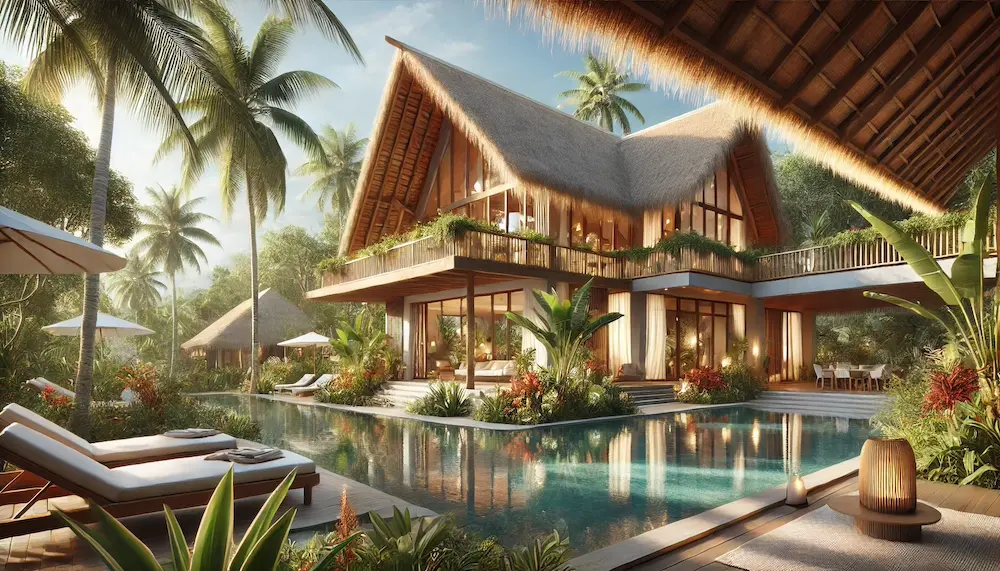Tropical villas are architectural sanctuaries designed to harmonize with warm, humid climates, seamlessly integrating indoor and outdoor living spaces. This article delves into the essence of tropical villas, their historical evolution, defining features, applications, and key considerations for prospective homeowners.
Introduction to Tropical Villas
A tropical villa is a residence crafted to embrace the environmental conditions of tropical regions. These structures prioritize natural ventilation, protection from the elements, and a strong connection with the surrounding landscape, offering a serene and comfortable living experience.
History and Origins of Tropical Villas
The concept of tropical architecture gained prominence in the mid-20th century, particularly around the 1960s, as architects sought to blend traditional tropical elements with modern living. Pioneers like Geoffrey Bawa in Sri Lanka were instrumental in this movement, experimenting with designs that responded to the tropical climate while incorporating contemporary aesthetics.
Key Features of Tropical Villas
Tropical villas are characterized by several distinctive elements:
- Natural Ventilation: Designs that promote airflow throughout the home, reducing reliance on artificial cooling systems.
- Shading Devices: Incorporation of overhangs, louvers, and pergolas to protect interiors from direct sunlight and heavy rainfall.
- Use of Natural Materials: Employment of materials like wood, stone, and bamboo to create a warm and natural ambiance.
- Indoor-Outdoor Integration: Open floor plans and expansive terraces that blur the line between interior and exterior spaces.
- Sustainable Design: Implementation of eco-friendly features such as green roofs, rainwater harvesting, and solar panels to enhance environmental responsiveness.
Applications of Tropical Villas
Tropical villas serve various purposes, including:
- Private Residences: Offering comfortable and climate-responsive living spaces that promote relaxation and well-being.
- Vacation Homes: Providing serene retreats that allow occupants to immerse themselves in lush, natural surroundings.
- Eco-Resorts: Serving as accommodations that emphasize sustainability and harmony with the environment, attracting eco-conscious travelers.
Considerations When Choosing a Tropical Villa
When selecting or designing a tropical villa, consider the following:
- Climate Adaptability: Ensure the design effectively responds to the local climate, incorporating features that facilitate natural cooling and protection from the elements.
- Material Selection: Choose materials that are durable and suitable for humid conditions to ensure longevity and minimal maintenance.
- Sustainability: Evaluate the incorporation of eco-friendly features and energy-efficient technologies to minimize environmental impact.
- Integration with Nature: Design the villa to harmonize with the surrounding landscape, preserving existing flora and enhancing the natural beauty of the site.
Conclusion
Tropical villas exemplify architectural designs that are both aesthetically pleasing and functionally suited to warm, humid climates. By embracing natural ventilation, sustainable materials, and seamless indoor-outdoor integration, these residences offer a harmonious living experience in tropical settings.
